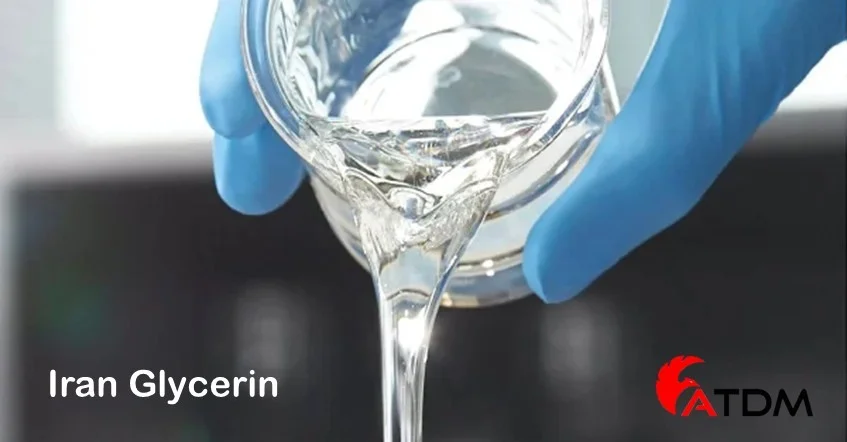Glycerin

What is Glycerin?
Glycerin, also called glycerol, is a clear and sweet liquid, and it easily mixes with both water and alcohol. People often find it in plant oils or animal fats, and they also produce it in factories. Because it is safe and useful, many industries depend on glycerol, and they use it widely.
Table of Contents
ToggleWhy Is C3H8O3 Called “Glycerin”?
The word comes from the Greek term glykeros, and it means sweet. People gave this name to glycerin because it tastes sweet, and moreover, the sweet taste makes it easy to notice. In fact, this sweetness is one of the main reasons people remembered it quickly.
Where Does Glycerin Come From?
Glycerin has two main sources, and each one serves different needs. First, vegetable glycerol comes from plants and natural oils, so many people prefer it for food and cosmetics. Second, petrochemical glycerol comes from petroleum, propylene, and chlorine, and therefore, it is mostly used in industrial products. As a result, the source of glycerol always affects its purity and application.
Types of Glycerin
There are two key types of glycerin_C3H8O3, and both are important. On one hand, vegetable glycerin comes from plants, and it usually goes into food or skin care. On the other hand, petrochemical glycerol comes from chemical processes, and it often supports industrial products. Both types remain useful; however, they often differ in purity levels and uses.
How Does glycerol Help?
Glycerin holds water very well, and it pulls moisture into skin, hair, or food. As a result, it prevents dryness, and it adds smoothness. In addition, it improves freshness and comfort. Therefore, glycerol plays a vital role in cosmetics, medicine, and even food processing.
What Can Glycerin Be Used For?
C3H8O3 Uses
People use glycerin in many industries, and it always shows its value. For example, it keeps ice cream soft, and it also makes cough syrups taste better. Moreover, it helps dried flowers stay fresh. In addition, it works as a thickener, a sweetener, and a humectant in food and drinks.
Glycerine Soap
Soap makers add glycerin to soap, and they do this to keep the skin soft and hydrated. Moreover, glycerol soap feels gentle, and it improves the washing experience.
Glycerine for Skin and glycerol for Face
Face creams and body creams often include glycerin, because it locks in moisture and keeps skin smooth. Furthermore, it makes the skin feel fresh and healthy. In addition, dermatologists recommend glycerol as a safe option for daily care.
Glycerine for Hair
Hair products also contain glycerin, and they use it to prevent dryness. Moreover, glycerol reduces frizz, and it makes hair shiny and full of life. Therefore, many shampoos and conditioners rely on it.
Glycerine Cream
Creams often include glycerin, and they do this to hold water. As a result, glycerol cream remains one of the best choices for healthy and soft skin.
Special Uses for Glycerin
Besides cosmetics and food, C3H8O3 also supports medical products. Moreover, industries use glycerol to make nitroglycerin, and that is important for controlled applications. However, this process happens only in labs, and it requires strict safety rules.
How to Store Glycerin Safely
You should always store glycerin_C3H8O3 in sealed containers, and you must keep it away from direct heat. For medical uses, store it at normal room temperature, and protect it from freezing. In addition, check containers often to ensure quality remains the same.
Types in Detail
Glycerin comes in three common grades, and each one has unique benefits. Crude glycerin contains about 40–88% purity, and it usually appears as a by-product. Technical grade glycerin has about 98% purity, and it serves industries very well. Finally, USP grade glycerin reaches 99.7% purity, and it works safely in food, cosmetics, and medicine.
Glycerine Price
The C3H8O3 price depends on both grade and purity. Buyers can select crude, technical, or USP grade based on their needs. Moreover, ATDM always shares updated prices, and this helps customers choose the right option.
Glycerine Song
A famous rock band called Bush released a song named “Glycerine.” Although the song is not about the liquid, it still creates a fun and surprising link.
Final Thoughts
Glycerin is a clear and safe liquid, and it offers countless benefits. Because of its unique qualities, people use it in food, cosmetics, and medicine. Moreover, it plays a vital role in products like glycerol for skin, glycerol for face, glycerol for hair, C3H8O3 soap, and glycerol cream. In addition, its wide use makes it one of the most important chemical ingredients in the world. Finally, you can always check the glycerol price to find the right grade for your needs, and you can even remember the famous glycerol song that shares its name.
Glycerin Specifications
Glycerin_C3H8O3 appears in several grades, and each one serves different applications. The main grades are Crude glycerol, Technical Grade glycerol , and 99.7% USP Grade glycerol.
Crude Glycerin
Glycerol Content: 40–88%
Ash: up to 2.0%
Water Content: up to 12%
pH (10% solution): 4.0–9.0
Organic Residue: 2.0% Max
Technical Grade Glycerin
Glycerol Content: minimum 98.0%
Moisture Content: maximum 2.0%
Chlorides: maximum 10 ppm
Color: 40 Pt-Co Max
Specific Gravity: 1.262 at 25 °C
Heavy Metals: maximum 5 ppm
Chlorinated Compounds: maximum 30 ppm
Fatty Acids & Esters: 1.00 Max
Water Content: maximum 5.0%
pH (10% solution): 4.0–9.0
Organic Residue: 2.0% Max
99.7% USP Grade Glycerin
Glycerol_Content: 99.7% minimum
Moisture_Content: maximum 0.3%
Chloride: maximum 10 ppm
Color: 10 APHA Max
Specific Gravity: minimum 1.2612 at 25 °C
Sulfates: maximum 20 ppm
Assay (dry basis): 99.0–101.0%
Heavy Metals: maximum 5 ppm
Chlorinated Compounds: maximum 30 ppm
Residue on Ignition: maximum 100 ppm
Fatty Acids & Esters: 1.000 Max
Water Content: maximum 5.0%
DEG & Related Compounds: must pass
Organic Volatile Impurities: must pass
Glycerin Specification
Glycerine for hair, Skin, Soap, cream, face

